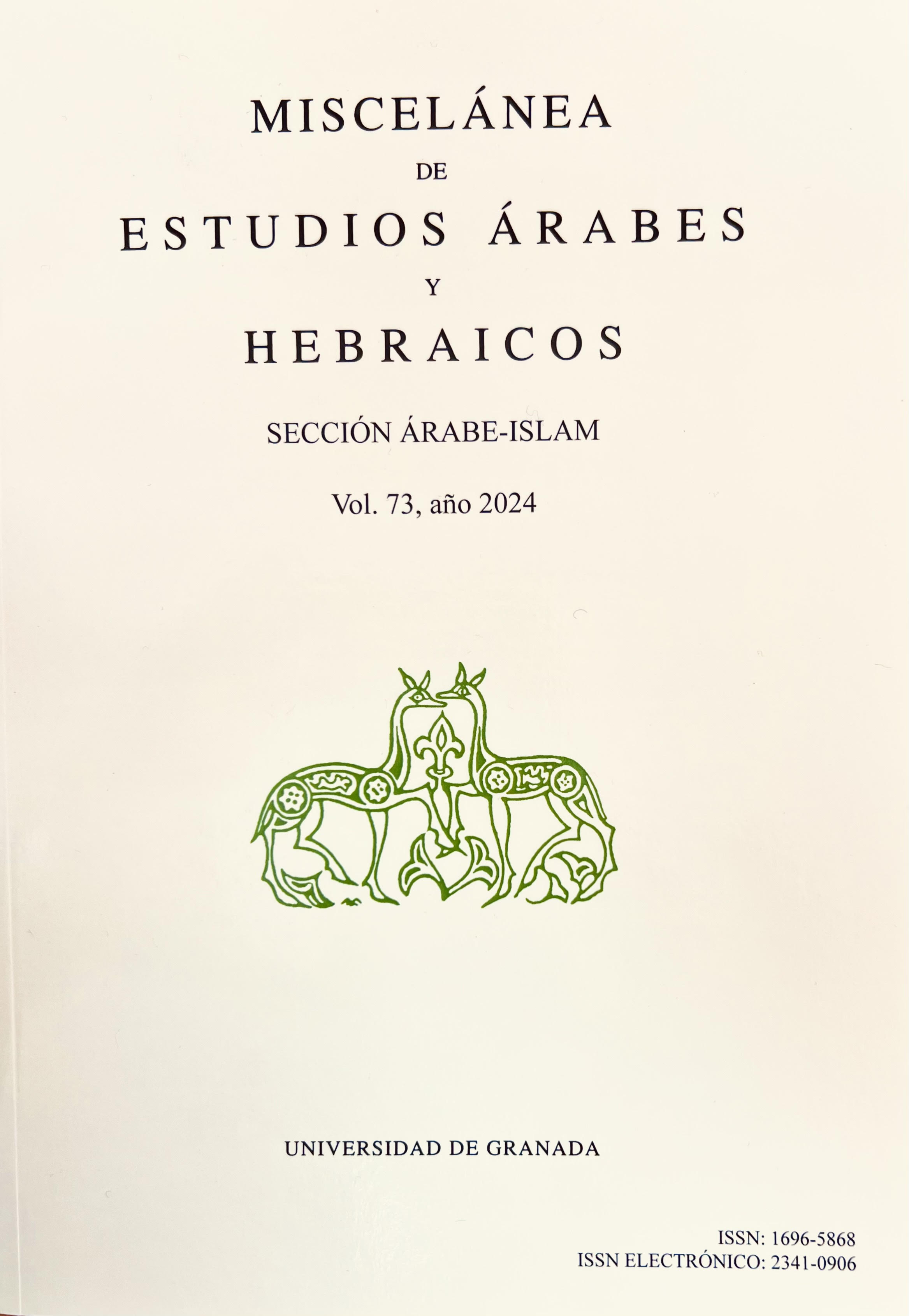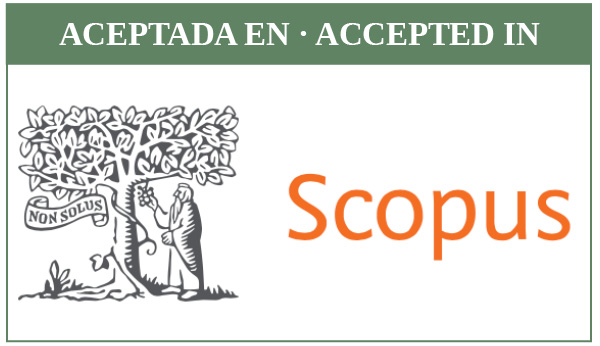“My Lady, Because you Are my Lady, I Have all of that Which Makes Life Worth Living”. Palestine: as Women and Mother in Resistance Poetry
DOI:
https://doi.org/10.30827/meaharabe.v73.27882Keywords:
Palestine. Palestinian poetry. Gender and Literature. Nation. WomenAbstract
This article undertakes an analysis of the representation of the Palestinian nation as a woman within Palestinian resistance poetry. Our methodology centers on theexamination of a selection of emblematic poems embodying the personification of Palestine in the feminine gender during the zenith of resistance poetry in the 1960s. Primarily, this corpus comprises works by poets such as Maḥmūd Darwīsh, Tawfīq Zayyād, Salim Ŷubrān, and Fadwā Ṭūqān. The analytical framework employed herein is grounded in the theoretical constructs of personification and gendered constructs of the nation. Within these poetic compositions, we discern three distinct representations, cast in the female gender, of the Palestinian nation: the land, the beloved woman, and the mother. Notably, the figure of the mother assumes a dual role, being perceived both as the biological and cultural reproducer of the nation, as well as the mother of the martyr. The findings underscore thepotency of these representations, wherein Palestine, personified as a woman, serves as resolute symbols of the nation, steadfastly resisting the territorial fragmentation imposed by military occupation. Poetry becomes a form of cultural expression that evades censorship through the use of metaphors and personifications. These literary and gender representations play a fundamental role in the construction of Palestinian identity.Downloads
References
ABDO, Nahla. “Nationalism and Feminism: Palestinian Women and the Intifada — No Going Back?”. En V. MOGHADAM (ed.). Gender and National Iden- tity and National Politics in Muslim Societies. Pakistan: Zed Books ltd & Ox- ford University Press, 1994, 148-168.
ALLEN, Lori A. “Mothers of martyrs and suicide bombers: he Gender of Ethical Discourse in the Second Palestinian Intifada”. The Arab Studies Journal, 17, 1 (2009), 32-61.
ANDERSON, Benedict. Comunidades imaginadas: reflexiones sobre el origen y la difusión del nacionalismo. México: Fondo de Cultura Económica, 1993.
ARAFAT, Yasser. “Speech to the United Nations General Assembly, New York, November 13, 1974”. Le Monde Diplomatique. Recuperado 10 junio 2017, de http://MondeDiplo.com/focus/mideast/a2288.
ASHRAWI, Hanan Mikhail. “The Contemporary Palestinian Poetry of Occupa- tion”. Journal of Palestine Studies, 3 (1978), pp. 77-101.
AUSLANDER, Leora y ZANCARINI-FOURNEL, Michelle. “Le genre de la na- tion et le genre de l'État”. Clio. Femmes, Genre, Histoire, 12 (2000), pp. 1-7. doi:10.4000/clio.161.
BADRAN, Margot. Feminists, Islam, and Nation: Gender and the Making of Modern Egypt. Nueva Jersey: Princeton University Press, 1995.
BARON, Beth. The Women's Awakening in Egypt: Culture, Society, and the Press. Nueva Haven-Londres: Yale University Press, 1994.
—. Egypt as a Woman: Nationalism, Gender, and Politics. Berkeley-Los Ange- les-Londres: University of California Press, 2005.
—. “Women, Honour, and the State: Evidence from Egypt”. Middle Eastern Studies, 42, 1 (2006), pp. 1-20.
BLOOMFIELD, Morton W. “A Grammatical Approach to Personification Alle- gory”. Modern Philology, 60, 3 (1963) pp. 161-171.
BOEHMER, Elleke. Stories of Women: Gender and Narrative in the Postcolonial Nation. Manchester: Manchester University Press, 2017.
BOSE, Sugata. The Nation as Mother: And Other Visions of Nationhood. India: Penguin Random House, 2017.
DARWIŠ, Maḥmūd. Dīwān. Beirut: Dār al-Awda, 1974.
DARWISH, Mahmoud y ARWAN, Ayub. Palestina como metáfora: entrevistas con el poeta Mahmud Darwish. Barcelona: Oozebap, 2012.
DAWN, C. Ernest. The Origins of Arab Nationalism. Nueva York: Columbia University Press, 1991.
FAYAD, Mona. “Reinscribing Identity: Nation and Community in Arab Wom- en's Writing”. College Literature, 22 (1995), pp. 147-160.
FONSECA AZUARA, Clarisa Danae. “Dando a luz a la nación: la matria palesti- na//Bearing the Nation: Palestinian Motherland”. Journal of Feminist, Gender and Women Studies, 6 (2018), pp. 33-43.
—. “La feminidad patriótica palestina: fedayinas y heroínas”. Kula: Antropología y Ciencias Sociales, 23 (2020), pp. 41-54.
—. Matria palestina: arte y género en la construcción de una nación sin límites. Madrid: Universidad Autónoma de Madrid, 2020.
FURANI, Khaled. “Dangerous Weddings: Palestinian Poetry Festivals during Is- rael's First Military Rule”. The Arab Studies Journal, 21 (2013), pp. 79-100.
GHANIM, Honaida. “Poetics of Disaster: Nationalism, Gender, and Social Change among Palestinian Poets in Israel After Nakba”. International Journal of Politics, Culture, and Society, 22 (2009), pp. 23-39.
GÓMEZ GARCÍA, Luz. Mahmud Darwix: poesía escogida (1966-2005). Valen- cia: Pre-Textos, 2008.
—. Palestina vive. Madrid: Contrabandos, 2013.
—. Mahmud Darwish. El poeta troyano. Madrid: Ediciones del Oriente y del Mediterráneo, 2023.
—. ¿Por qué has dejado solo al caballo? Estado de sitio. Madrid: Cátedra, 2023. HAIM, Sylvia. Arab Nationalism: An Anthology. Los Angeles: University of California Press, 1962.
HARLOW, Barbara. Resistance Literature. Londres: Taylor & Francis, 1987. HIYYAWI, Sulafa y BEJARANO, Ingrid. Una voz palestina. Madrid: Letrúmero, 1998.
HUMPHRIES, Isabelle y KHALILI, Laleh. “Gender of Nakba Memory”. En Ahmad H SA'DI (ed.). Nakba Palestine, 1948, and the Claims of Memory. Nueva York: Columbia University Press, 2007, pp. 207-228.
KANAANEH, Rhoda Ann. Birthing the Nation: Strategies of Palestinian Women in Israel. California: University of California Press, 2002.
KANAFANĪ, Gassān. Al-Adab al-filasṭīnī al-muqāwim taḥt al-iḥtilāl 1948-1968. Beirut: Dār Manšūrāt al-Rimāl, 2013.
—. Adab al-muqāwama fi filistīn al-muḥtala 1947-1966. Beirut: Dar Manšūrāt al-Rimāl, 2013.
KENNY, Lorne M. “Sati' al-Husri's Views on Arab Nationalism”. Middle East Journal, 17 (1963), pp. 231-256.
KHALILI, Laleh. Heroes and Martyrs of Palestine: The Politics of National Commemoration. Nueva York: Cambridge University Press, 2007.
KHRAICHE RUIZ-ZORRILLA, Victoria. “Tawfiq Zayyad, promotor de la poe- sía de resistencia palestina del interior: el poeta y el político”.·Anaquel de Es- tudios Árabes, 17 (2006), pp. 109-131.
—. “Los fundadores de la poesía de la resistencia palestina: el círculo de la revis- ta al-Ŷadīd”. International Humanities Studies, 2 (2015), pp. 9-28.
MARTÍNEZ MONTÁVEZ, Pedro. Poetas palestinos de resistencia. Madrid: Ca- sa Hispano-Árabe, 1968.
MASSAD, Joseph. “Conceiving the Masculine: Gender and Palestinian Nationa- lism”. The Middle East Journal, 49 (1995), pp. 467-483.
MCCLINTOCK, Anne. “Family Feuds: Gender, Nationalism and the Family”. Feminist Review, 44 (1993), pp. 61-80.
MELION, Walter y Bart RAMAKERS. Personification: Embodying Meaning and Emotion. Boston: Brill, 2016.
MEMRI. “Protest Poem By Palestinian Poet Decries Oppression Of Women”. https://www.memri.org/reports/protest-poem-palestinian-poet-decries-oppres sion-women [consultado el 1/09/2023].
MOGHADAM, Valentine M. Gender and National Identity: Women and Politics in Muslim Societies. Pakistan: Palgrave Macmillan, 1994.
MOSTOV, Julie. “Sexing the Nation/Desexing the Body: Politics of National Identity in the Former Yugoslavia”. En Tamar MAYER (ed.). Gender Ironies of Nationalism: Sexing the Nation. Londres: Routledge, 2000, pp. 103-126.
NAGEL, Joane. “Masculinity and Nationalism: Gender and Sexuality in the Mak- ing of Nations”. Ethnic and Racial Studies, 21 (1998), pp. 242-269. https://doi-org.sire.ub.edu/10.1080/014198798330007.
PETEET, Julie. “Icons and Militants: Mothering in the Danger Zone”. Signs, 23 (1997), pp. 103-129.
PRIETO, María Luisa. “Poesía Árabe”. http://www.poesiaarabe.com/fad wa_tuqan.htm (consultado el 22/01/2023).
RAO, Shakuntala. “Woman-as-Symbol: The Intersections of Identity Politics, Gender, and Indian Nationalism”. Women's Studies International Forum, 22, 3 (1999), p. 317-328. https://doi.org/10.1016/S0277-5395(99)00033-3
RUTTEN, Ellen. Unattainable Bride Russia: Gendering Nation, State, and Intel- ligentsia in Russian Intellectual Culture. Illinois: Northwestern University Press, 2010.
SACA, Iman. Embroidering Identities: A Century of Palestinian Clothing. Chi- cago: Oriental Institute Museum Publications, 2006.
SA'DI, Ahmad H. y ABU-LUGHOD, Lila. Nakba palestina, 1948, y los reclamos de la memoria. Buenos Aires: Canaán, 2017.
SALHI, Zahia Smail. “The Algerian Feminist Movement between Nationalism, Patriarchy and Islamism”. Elsevier, 33 (2010), pp. 113-124, DOI:10.1016/j.wsif.2009.11.001.
SWEDENBURG, Ted. “The Palestinian Peasant as National Signifier”. Anthropo- logical Quarterly, 63, 1 (1990), 18-30.
—. Memories of Revolt: The 1936-1939 Rebellion and the Palestinian National Past. Canada: University of Arkansas Press, 2003.
TROMMLER, Frank, Ashley Sides; ROSS-NAZZAL, James; WALTON, Whit- ney; BUSE, Dieter y LEES, Andrew. Crossing the Atlantic: Travel and Travel Writing in Modern Times. Texas: A&M University Press, 2011.
ṬŪQĀN, Fadwā. Tuqan: palabras a mi patria. Madrid: Casa Hispano-Árabe, 1969.
—. Dīwān. Beirut: Dār al-Awda, 1978.
—. Al-A‘māl al- ši‘riyya al-kāmila. Beirut: al-Mu’assasa al-‘Arabiyya li-l-Dirāsa wa-l-Našr, 1993.
YUVAL-DAVIS, Nira y ANTHIAS, Floya. Woman-Nation-State. Nueva York: Springer, 1989.
ZAYYĀD, Tawfīq. Dīwān. Beirut: Dār al-Awda, 1970.
Downloads
Published
How to Cite
Issue
Section
License
Copyright (c) 2024 Miscelánea de Estudios Árabes y Hebraicos. Sección Árabe-Islam

This work is licensed under a Creative Commons Attribution 4.0 International License.
The authors publishing their work in this journal agree to the following terms and conditions:
1. The authors retain the copyright and give the journal the right to be the first publication of the work and also to be licensee under a Creative Commons Attribution License which allows others to share the work, provided the author of the work and the initial publication in this journal are acknowledged.
2. Authors may make additional agreements separately for the non-exclusive distribution of the version of the work published in the journal (for example, putting it in an institutional repository or publishing it in a book), with acknowledgement of its initial publication in this journal.
3. Authors are allowed and encouraged to electronically disseminate (for example, in institutional repositories or on their own web page) the published version of their works (publisher's post-print version) or, if not possible, the author's reviewed and accepted post-print version. This is to facilitate productive exchanges, and allow for earlier and greater citation by third parties of the published works (See The Effect of Open Access).
4. The journal accepts no responsibility for the opinions expressed by the authors.















